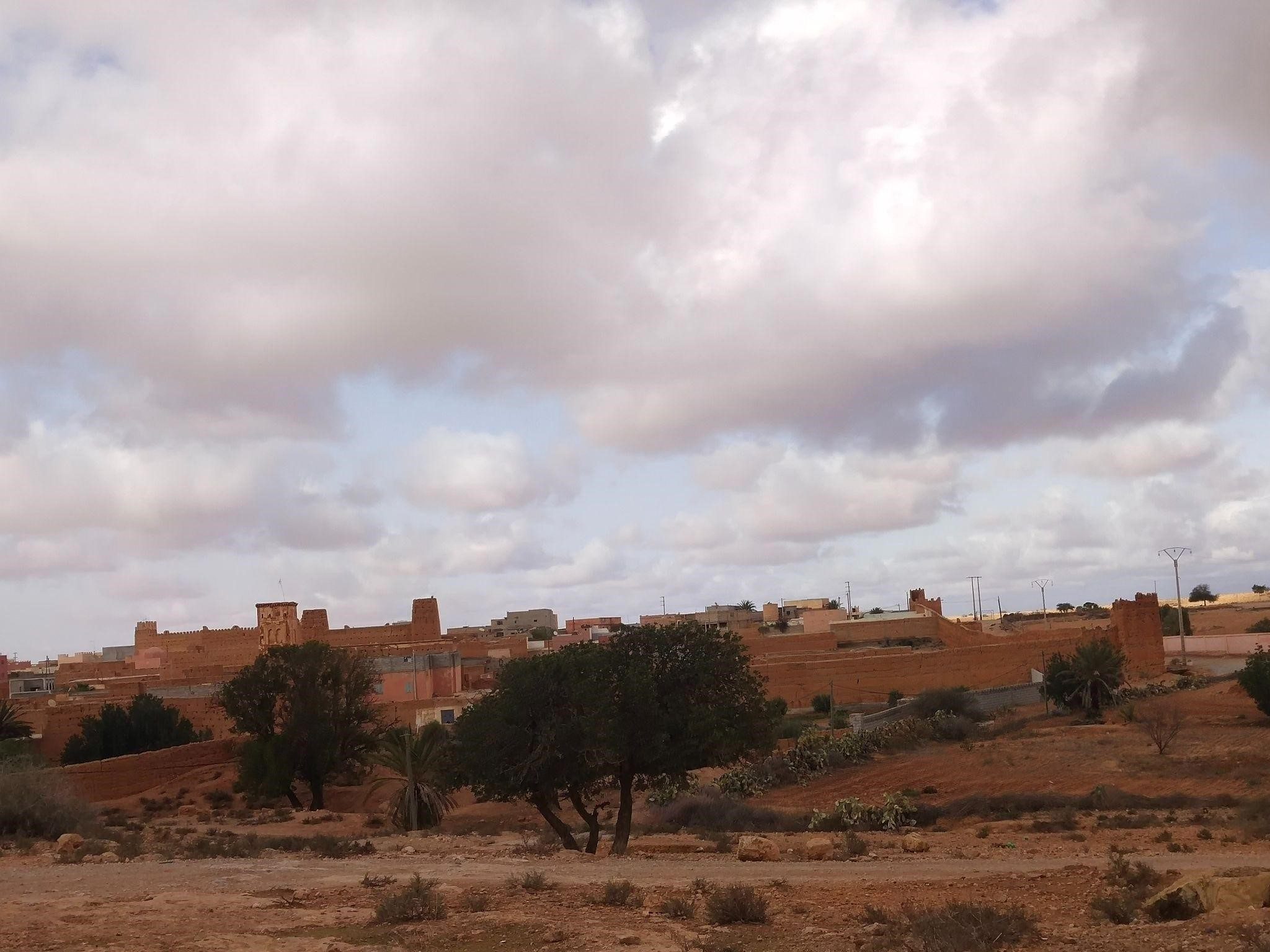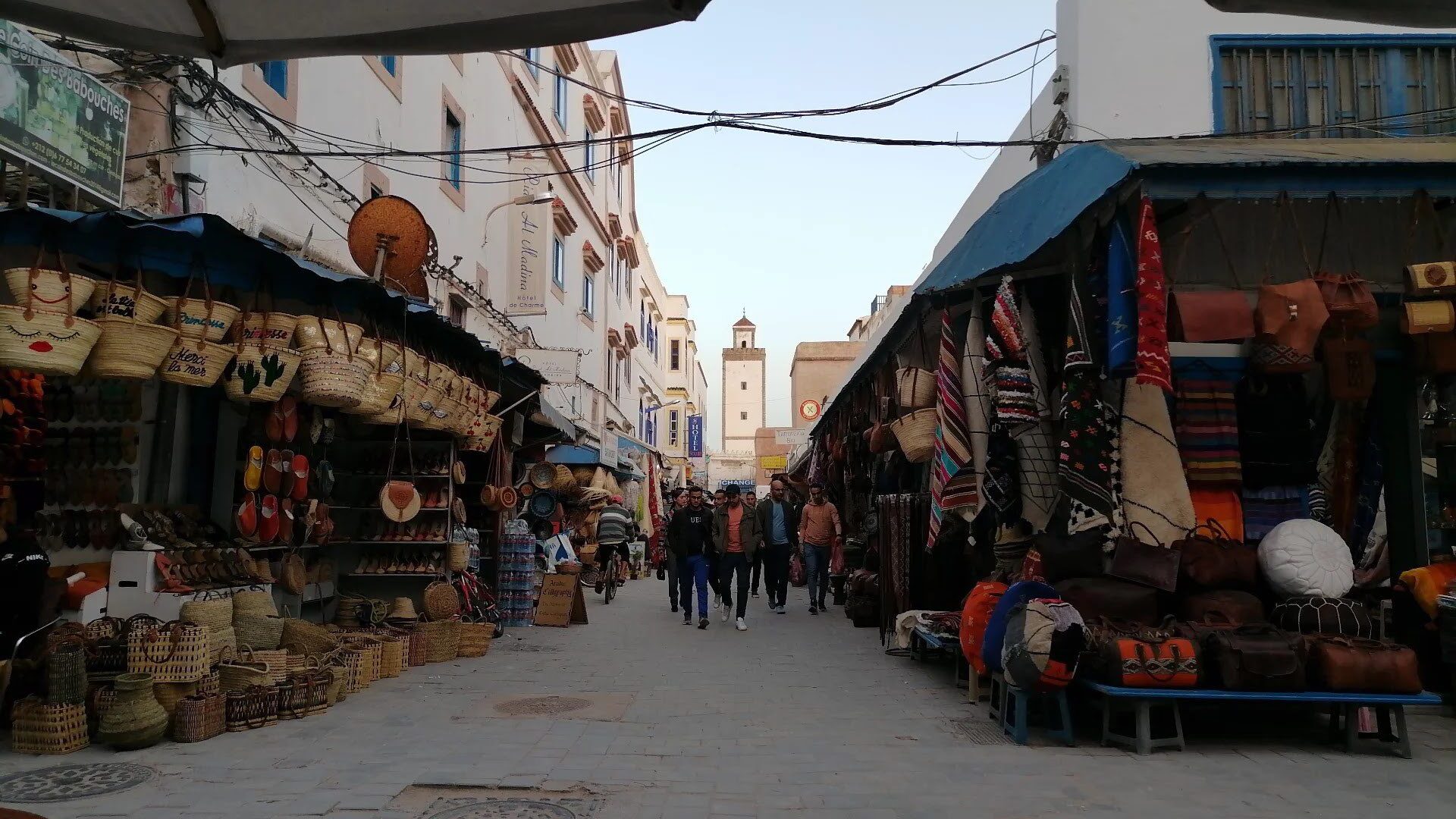Arabic Version
Heritage Month in Morocco
Wandering in Essaouira: The Land of Coexistence
By Amal Mansouri, Dakira Field Coordinator
Essaouira, Morocco

The old medina of Essaouira. Photo: Amal Mansouri/HAF
As someone who had never been to Essaouira, I was excited to be in the city of wind that’s known for its rich history and diverse cultural heritage. I entered the old medina through Bab Marrakech, which leads to its center. While walking through that alley, I was looking for clues that could refer me to the uniqueness of that place. With an open mind and with every step, I investigated the marks that were left by the previous inhabitants and tried to picture their lifestyles and what everything looked like back in that time. Although I conducted a lot of research before my visit, there were missing gaps that I wanted to bridge through my visit to the old medina. Thus, it was an exploration journey to one of the most famous sites in our country. Given its limited size, I was able to visit multiple cultural sites during that first visit. I stopped by Bayt Dakira, Synagogue Slat Lkahel, Synagogue Pinto, the Mellah neighborhood, Skkala, and Bab Doukkala.
While wandering in the medina, I came across different people, locals and tourists, who spoke different languages, some of which I couldn’t recognize, and who were evidently from different origins and cultural backgrounds. It seemed like everyone was going on a scavenger hunt, except that in this case, everyone’s a winner. The prizes varied from one person to another. For some, it was a never-before-taken picture, and for others it was new information, a testimony from a local, an interaction with the guardian of a historical site, an invite to try the local food, etc. And my prize was witnessing those dynamics. I came to the medina looking for traces of the coexistence and the solidarity that marked the lives of our ancestors, but I thankfully ended up finding living proof of what I thought was just a memory.
The diversity in the medina manifests in everything, starting from the languages and the merchandised products, to the buildings and their architecture. On my way from Bayt Dakira, I saw a young man who had a small business selling orange juice with the word “welcome” written in different languages: Arabic, French, English, Spanish, and Hebrew. I asked if he actually spoke all five of them. He said that aside from Arabic, he doesn’t speak any of the others. Even if it was a small business that may not attract the attention of a lot of people, he wanted to reach out to the maximum number of people and offer his services to them. He could’ve just written it in Arabic or English, the universal language, but, to me, the fact that he chose (perhaps for marketing purposes) the most popular languages is an act showing a desire for coexistence and solidarity. Just like that, I started piecing together insights about Essaouira-Mogador’s pluralistic past and present. The deeper I dig, the more impressed I get by the local community of the city and their openness to other cultures and religions.

“Welcome” sign written in different languages. Photo: Amal Mansouri/HAF
Amal Mansouri is a field coordinator for the USAID Dakira program and is currently based in Essaouira. Dakira, implemented by the High Atlas Foundation and its partners, aims to strengthen inter-religious and inter-ethnic solidarity through community efforts that preserve cultural heritage in Morocco.
This article was completed with the support of the United States Agency for International Development (USAID) and the High Atlas Foundation is solely responsible for its content, which does not necessarily reflect the views of the USAID or the Government of the United States.






